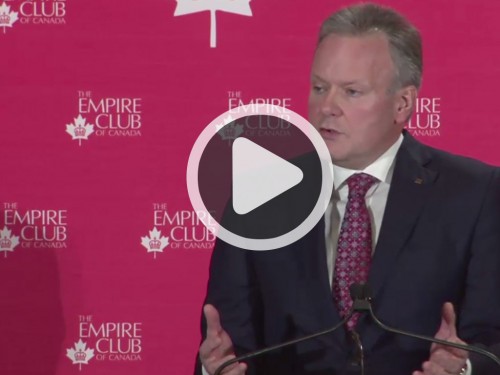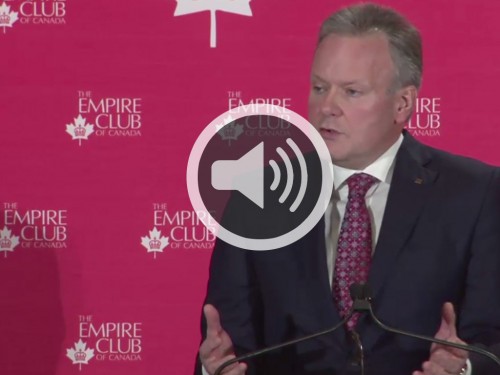Bank of Canada updates framework for unconventional monetary policy measures
The Bank of Canada is applying lessons from the global financial crisis as it updates its framework for the use of unconventional monetary policy measures, Governor Stephen S. Poloz said.
“We don’t need unconventional policies now, and we don’t expect to use them. However, it’s prudent to be prepared for every eventuality,” Governor Poloz said in a speech today to the Empire Club of Canada.
The Bank is forecasting increasing annual growth in 2016 and 2017, with the Canadian economy expected to reach full capacity around mid-2017.
In the unlikely event that the economy was hit with another major negative shock, the Bank could implement unconventional monetary policy measures. These include forward guidance on the future path of its policy rate, stimulating the economy through large-scale asset purchases (commonly referred to as quantitative easing), funding to ensure that credit is available to key economic sectors, and moving its policy rate below zero to encourage spending.
The Bank now estimates that the effective lower bound for its policy interest rate is around minus 0.5 per cent, a change from its 2009 assessment of 0.25 per cent, Governor Poloz said.
Furthermore, the Bank no longer considers that these measures would be used in a predetermined sequence, the Governor said. Rather, it would use whatever combination of policies it judged appropriate under the circumstances.
“Regardless of the situation, the Bank will keep its primary focus on achieving the inflation target,” Governor Poloz said. Unconventional measures would be designed to minimize market distortions and risks to the Bank’s balance sheet.
Note to Editors:
The Bank’s updated Framework for Conducting Monetary Policy at Low Interest Rates is available on the Bank’s website.

